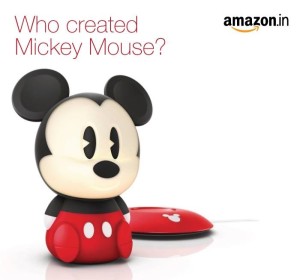Amazon has announced that’s it’s going to invest US $2 billion into its expansion into India. Launched slightly over a year ago with little to no advertising, the investment represents Amazon India’s serious commitment to exploiting the growing Indian e-commerce market.
“We see huge potential in the Indian economy and for the growth of e-commerce in India.” Said Amazon CEO, Jeff Bezos, “At current scale and growth rates, India is on track to be our fastest country ever to a billion dollars in gross sales.”
There are, however, some serious hurdles for any e-commerce business in India to get over. Over a fifth of Indians live below the poverty line – designated by the World Bank as people living on less than US$1.25 a day – and approximately half of Indians don’t have a bank account.
There isn’t a particularly high proportion of Indians online either. The Internet and Mobile Association of India (IAMAI) predicted the number of internet users to increase to 16% of the population by June this year. Whilst that number might sound miniscule, that’s a whopping 243 million users – a year-on-year growth of 28%.
The IAMAI also estimated there to be 155 million mobile internet users in March this year and expected the number to surpass 185 million by June.
“India has a large number of internet users with many of them still not shopping online on a regular basis.” said Phillip Smith, UK Country Manager for Trusted Shops, which operates a trust mark for online shops, “This means the potential for growth in e-commerce in India is not only huge but is also on the edge of a potential online shopping explosion.
“For businesses big and small market places will form the gateways to expand their businesses overseas, and the race to build trust with their new consumers ahead of their competitors will be a top priority.”
At the same time, however, Smith urged caution: “Successful businesses in Europe need to appreciate that the heritage and trust they have built here will not be carried with them when entering a new territory.”
Volkswagen may have appreciated this advice, sliding from 3% of the share of the Indian car market in 2012 to 2.35% in 2013 – a long way off from their stated aim of 8-10% by 2015.
In its bid to become India’s number one e-marketplace Amazon will be taking on the more established Indian company Flipkart, founded in 2007.
Founded by Sachin and Binny Bansal – both ex-Amazon employees – Flipkart is banking hard on exponential growth of mobile internet users; releasing an iPhone app in November and Microsoft mobile app in April this year.
“By 2020 India will have more than half a billion mobile internet users.” Read a statement from the Binny Brothers, “Our intense focus on mobile and technology puts us in a unique position to take advantage of this massive opportunity.”
In the same statement, Flipkart, announced that it had raised $1 billion from its latest funding round, the single largest round by an internet company from India.
The timing of Amazon’s announcement, only a day after Flipkart’s statement on the finding round, is unlikely to be a coincidence: Flipkart represents real competition for Amazon in India.
Flipkart claims to have 22 million registered users and hosts 3,000 merchants. They handle 5 million shipments a month and did $1 billion in sales this fiscal year.







